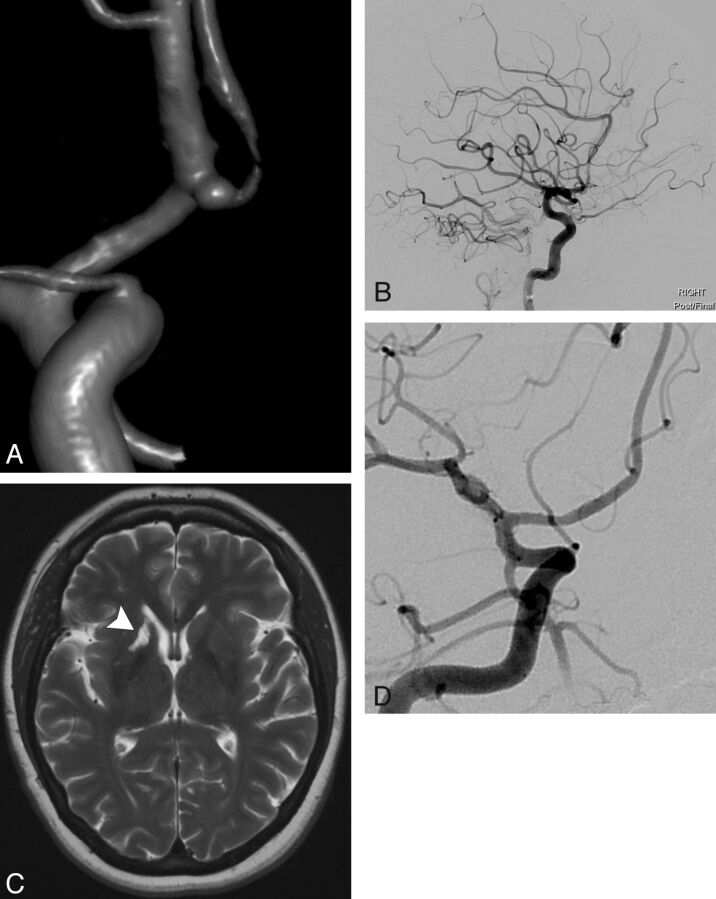Fig 1.
A 47-year-old patient with a family history of ruptured cerebral aneurysms presented with a small right anterior cerebral artery aneurysm identified at screening. The patient elected to undergo endovascular treatment with the PED. A, 3D image demonstrates a 2-mm right A1/A2 segment anterior cerebral artery aneurysm with the anterior communicating artery arising from the aneurysm sac. B, Final lateral right ICA angiogram after uncomplicated deployment of a single 2.5 × 10 mm PED across the aneurysm neck demonstrates patent cerebral vasculature. The patient demonstrated conversion to a clopidogrel hyper-response (PRU 52) 30 days after initiation of DAT and underwent 2 clopidogrel dose adjustments to remain within the target P2Y12 receptor inhibition range of 60–240 PRU. A final dosing regimen of 75 mg clopidogrel every third day was instituted 94 days after initiation of DAT. At the time of the 6-month follow-up angiogram, the patient's spouse stated that for the past 3–4 months the patient had experienced memory deficits, cognitive changes, and weight gain. MR imaging examination of the brain was performed immediately, and P2Y12 receptor inhibition testing showed a PRU of 205. C, T2WI demonstrates an old infarction in the right caudate head, anterior limb of the right internal capsule, and right putamen (arrowhead), consistent with a perforator infarction (likely in the territory of the right recurrent artery of Heubner), which was not present in pretreatment imaging. D, Six-month follow-up catheter angiogram demonstrates complete exclusion of the right anterior cerebral artery aneurysm from the circulation with a widely patent PED but no flow across the anterior communicating artery. The patient underwent neurologic and neuropsychological consultation and had nondisabling deficits in short-term memory, attention, problem solving, and self-regulation with near-complete resolution after outpatient rehabilitation.

